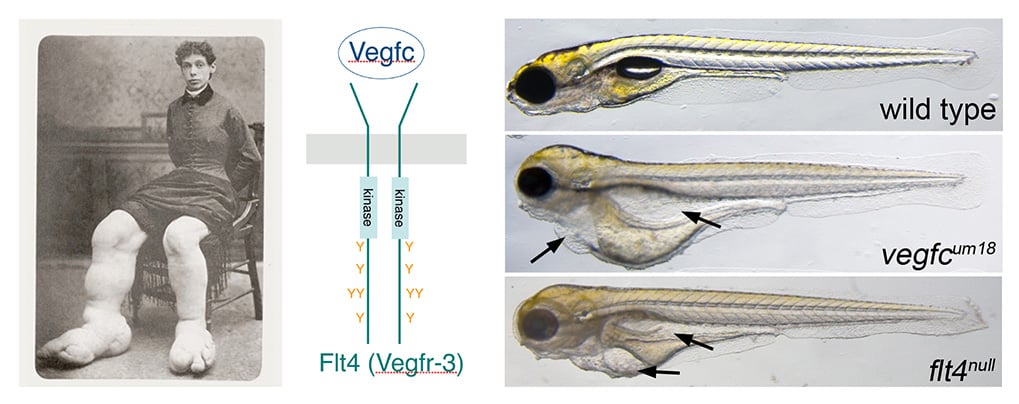Disease models in zebrafish
Zebrafish possess many of the same organ systems as humans. Importantly, many of the genes important for their development are similar in zebrafish and humans. Moreover, developmental genes are also usually implicated in disease processes. Thus, we can use the zebrafish to gain important insights into molecular and cellular mechanisms important for human disease progression. For example, humans bearing mutations in vascular endothelial growth factor C (VEGFC) or its receptor tyrosine kinase (FLT4) have defects in the formation of their lymphatic system, which is important for draining interstitial fluid back into the circulatory system. As a consequence, these patients display severe lymphedema (bottom left). In zebrafish, we have generated mutations in vegfc and flt4, both of which are conserved between zebrafish and humans. Like humans, zebrafish larvae also display lymphedema due to a failure to form a complete lymphatic system (bottom right). Using these mutants, we have been able to discover important dowstream pathways required for lymphatic development. In the future, we hope to use mutants such as these, along with small molecule screens, to identify therapeutic molecules that could promoe lymphatic growth and alleviate lymphedema in humans.
